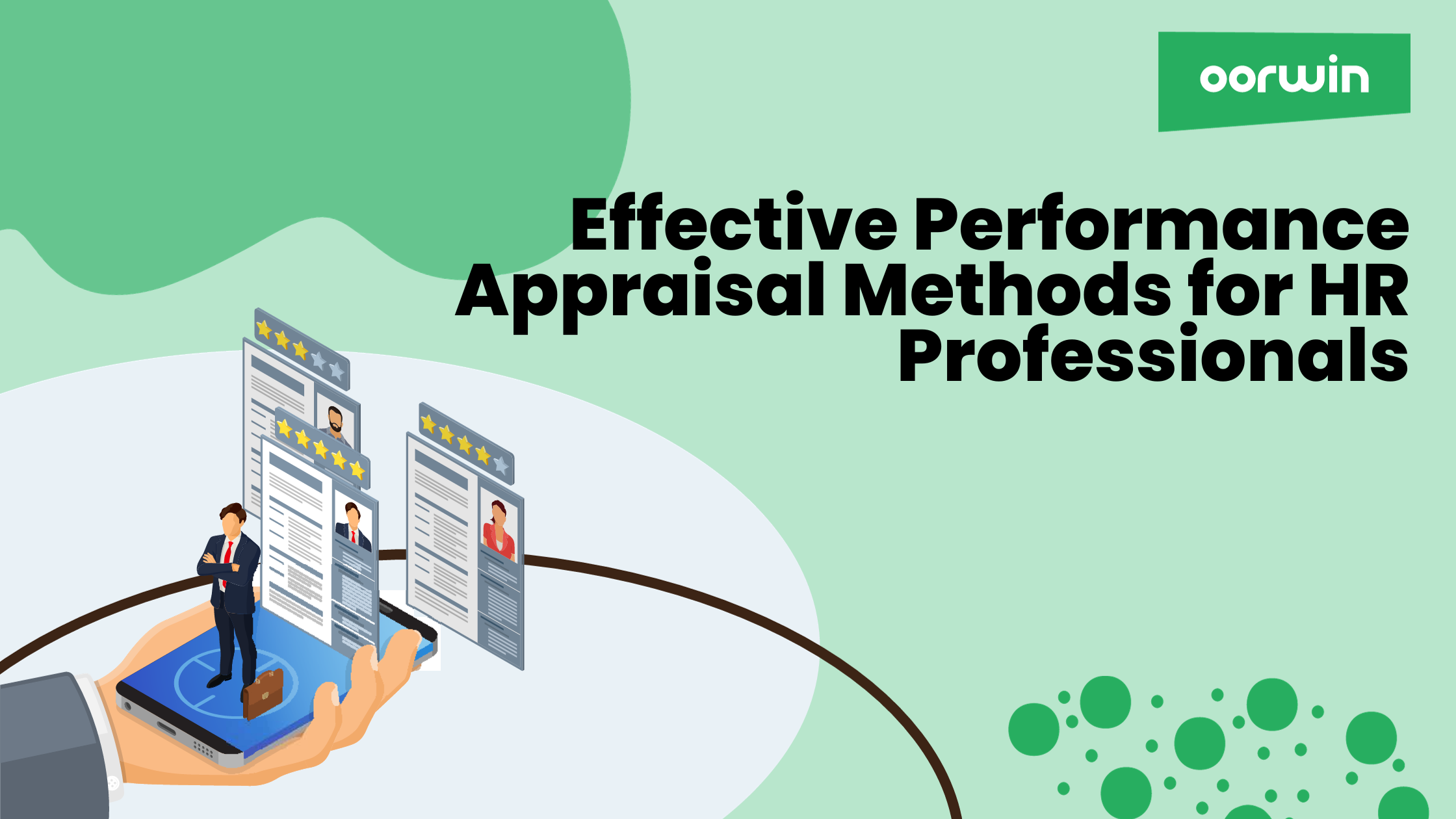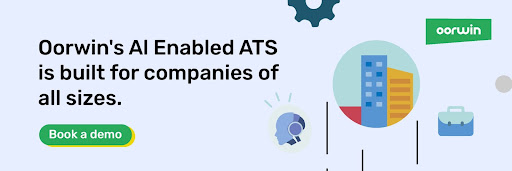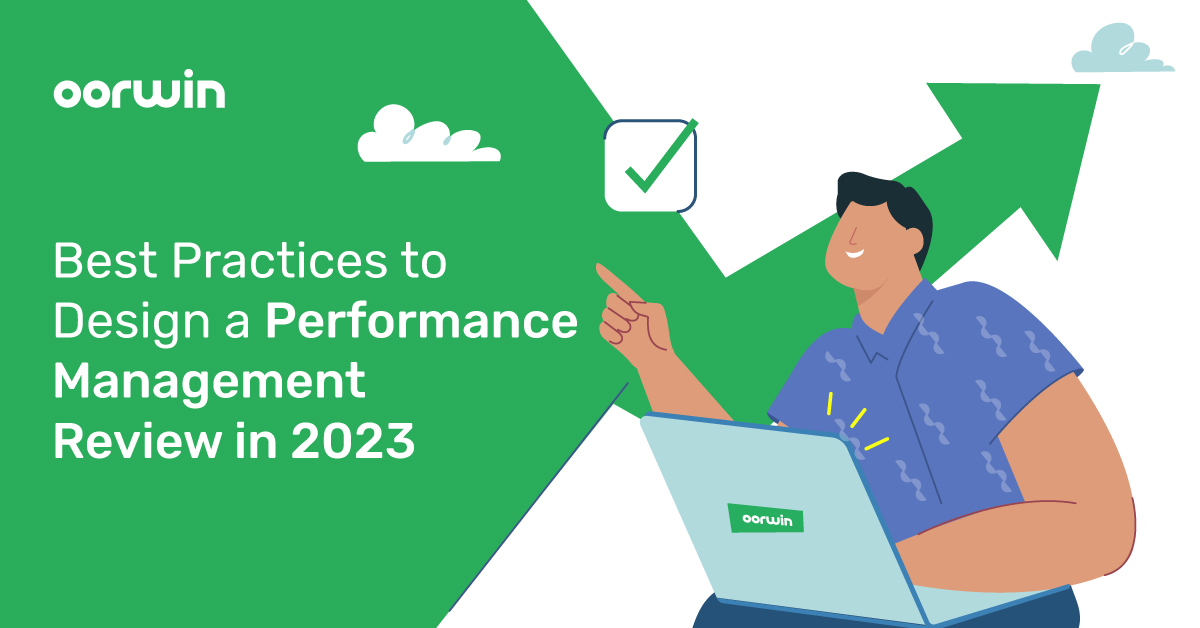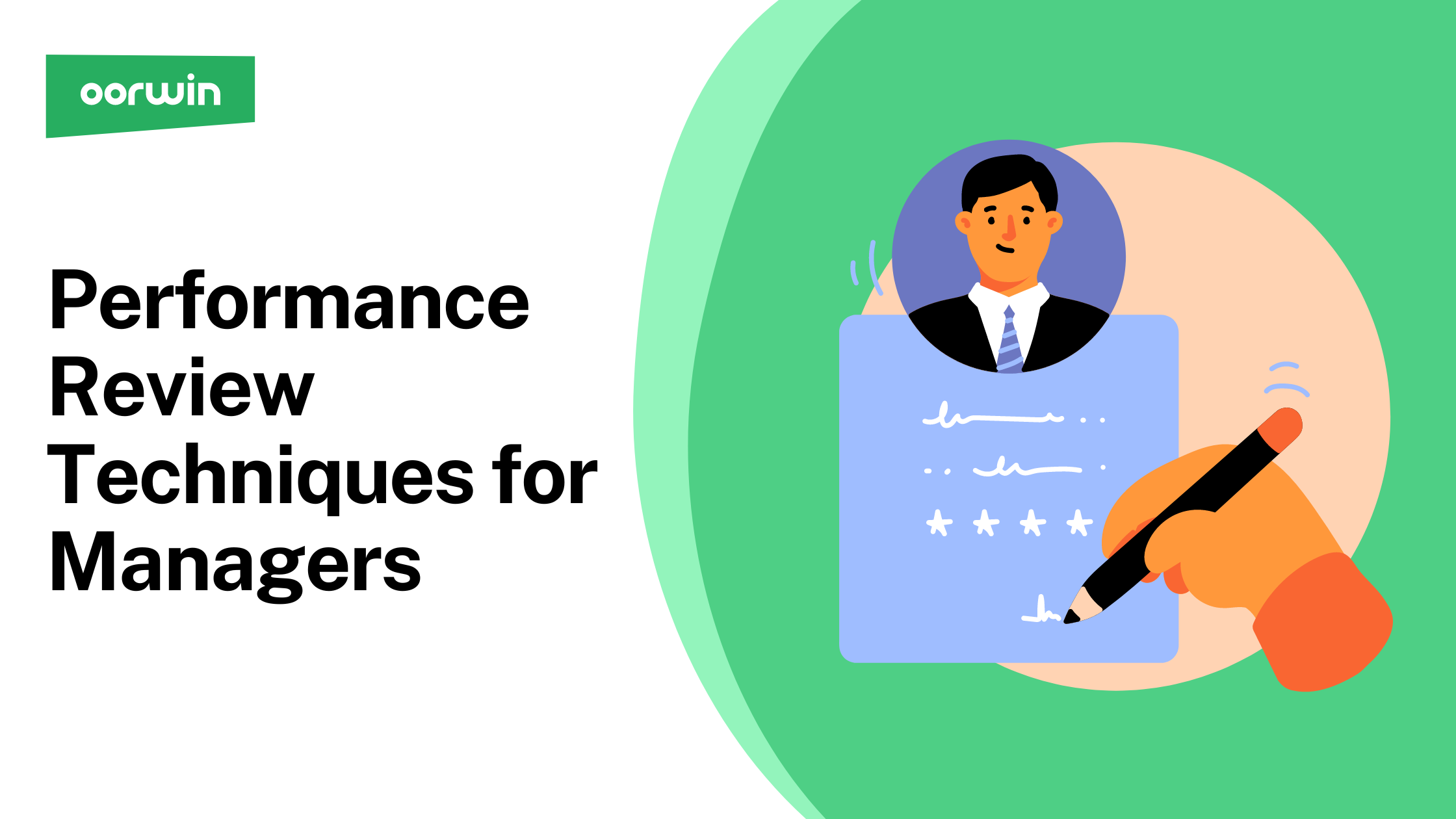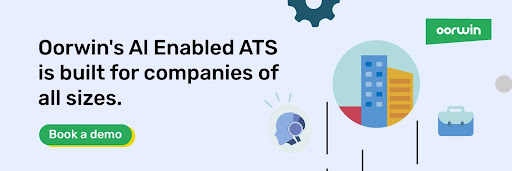Use of AI In Performance Reviews
One of the industries that have been revolutionized by artificial intelligence (AI) is performance management. It is now used in the performance review process, which managers have traditionally carried out manually. Research conducted by McKinsey shows almost 50% of businesses today have implemented Artificial Intelligence in one of their operation sectors. AI in performance review has proved to be a game-changer, enabling organizations to automate the process, reduce errors, and provide real-time analysis.
Reasons for Using AI in Performance Review
Artificial Intelligence automates the performance management process by collecting data on employee performance from various sources, such as emails, calendars, and project management tools. The data is analyzed and processed to assess an employee’s performance objectively. AI algorithms are trained to identify patterns in the data and provide insights into areas where employees need improvement.
- Streamlining Data Analysis: AI, in conjunction with data science, aids managers in cleaning, analyzing, and modeling employee data. It can extract performance-related information from various sources, such as calendars, emails, and project management tools, providing a comprehensive view of an employee’s performance.
- Facilitating Objective Evaluations: AI tools are increasingly integrated with diverse data sources, enabling the incorporation of objective data into performance evaluations. Managers can leverage AI to compare employee performance against established metrics, ensuring fair and unbiased assessments.
- Pinpointing Improvement Opportunities: AI algorithms detect patterns that affect employee productivity, retention, and satisfaction. By analyzing these patterns, managers can gain insights into potential areas for improvement and take proactive steps to enhance overall performance.
- Delivering Customized Feedback: With real-time analysis capabilities, AI empowers managers to provide immediate and relevant employee feedback. This approach helps address issues promptly and fosters a more dynamic and responsive work environment.
How to Utilize Generative AI to Write Performance Reviews
Generative AI is transforming the landscape of performance reviews, offering a practical solution to the time-intensive nature of this process. In a landscape where managers traditionally spend upwards of 17 hours per employee on reviews, AI can be a significant time-saver. By generating specific phrases and suggestions, AI helps write feedback more effectively, ensuring each employee feels uniquely appreciated.
This technology speeds up the drafting of reviews, enriches vocabulary, and introduces variety in language, making communication more effective. It aids in setting tailored employee goals, suggests development plans, and prompts ideas for key competencies based on predefined criteria. AI also compiles and summarizes performance data collected over the year, providing a comprehensive view of an employee’s contributions and areas for growth.
Moreover, AI assists in developing personalized learning plans, aiding career progression, and helping employees articulate their achievements and goals. However, it’s crucial to remember that AI should be a tool for enhancement, not a replacement for human insight. While AI can offer a starting point, especially in overcoming writer’s block or structuring reviews, the human touch remains indispensable. Nowadays, even there are seemingly AI-powered ATS that help ease recruitment processes. Performance reviews require genuine, personalized interactions. AI should support and streamline this process, not replace the nuanced understanding and empathy human managers bring.
Suggested AI Prompts For Writing Performance Reviews
For AI to effectively assist in performance reviews, precise and detailed input is crucial. Managers should maintain an up-to-date list of each employee’s achievements and challenges, which can serve as a foundation for AI-generated insights.
Begin by assessing how employees could improve their teamwork, especially considering any specific feedback they’ve received over the years. Consider these prompts using popular AI tools like ChatGPT, Claude 2, and Bing Chat.
- Request AI to suggest alternative, positive phrasing for a set of employee traits [list traits].
- Use AI to scan comments about five employees [insert comments] for unconscious bias.
- Have AI analyze an employee’s key achievements [list them], identify prominent themes, and assess which hard and soft skills are significant and which need development.
Life, for example-
- Assessment of Overall Performance
Summarize [Employee Name]’s overall performance for the past year, highlighting key achievements and areas for improvement.
- Teamwork and Collaboration
Evaluate [Employee Name]’s contributions to team projects and their effectiveness in collaborating with colleagues.
- Skill Development
Analyze the development of [Employee Name]’s professional skills, including technical and soft skills, and suggest areas for further growth.
- Goal Achievement
Review the goals set for [Employee Name] at the start of the year. Assess their success in meeting these goals and discuss any challenges encountered.
- Feedback on Specific Projects
Provide detailed feedback on [Employee Name]’s role and performance in specific projects, such as [Project Name].”
These prompts guide AI to provide targeted and actionable feedback, which managers can further refine and personalize. This approach ensures that the AI’s role is to augment and streamline the review process, not to replace the essential human element of personal understanding and connection.
Benefits of Using AI for Performance Reviews
Some of the most significant benefits of performance reviews are:
No human errors
AI eliminates human errors and biases that can creep into performance review processes. Unlike humans, AI algorithms do not have personal preferences that could affect performance review ratings. This ensures that the performance review process is objective and unbiased, leading to fair and accurate assessments.
Projections based on more comprehensive data
AI algorithms analyze vast amounts of data from multiple sources, providing a more comprehensive view of employee performance. This allows managers to make informed decisions about employees’ career development, identify areas of improvement, and provide actionable feedback.
Continuous assessment and real-time analysis
Continuous assessment of employees is driven by artificial intelligence performance management, as it constantly collects data on employee activity. This ensures managers can identify and address performance issues in real-time rather than waiting for the annual performance review cycle. The real-time analysis allows managers to provide timely feedback and coaching, leading to better employee performance.
Better managers
AI gives managers a data-driven approach to performance management, allowing them to make informed decisions about employee development and identify potential organizational leaders. With AI-powered insights, managers can take a more strategic approach to talent management, ensuring that employees are developed and retained.
Employee engagement
AI enhances employee engagement by providing personalized feedback and career development recommendations. By providing real-time feedback, employees can address performance issues proactively, improving their performance and job satisfaction. This leads to increased employee engagement and productivity.
Resolving Bias by Utilizing AI
When supervisors frequently show bias towards an employee, it is time to put aside long-held prejudices. AI can prevent and remove biases from this, ensuring equality. AI provides equal opportunities, eliminating prejudices based on race, age, nationality, and other factors.
In contrast to machines that take a straight line, human nature may become biased and cause behavior. As a result, machine learning and artificial intelligence can establish an impartial setting that can offer equitable opportunities for evaluating or promoting employees.
Recognizing Shortcomings and Enhancing Performance
An organization should concentrate on developing a collaborative workspace to spot ineptitude and make adjustments. It should encourage collaboration, regardless of hierarchy or bias.
Data and AI are valuable corporate assets, and using AI in performance management will free up executives’ time to focus on innovative new ideas and essential business operations. It can also assist people in creating a realistic schedule and setting achievable objectives to fulfill deadlines. Individual performance ought to reflect it, and production ought to increase. AI can also aid in predictive performance appraisal so that there are no unfair practices.
Training and Development
By analyzing career growth using information from previous performance assessments, interests, and skill sets, using Artificial intelligence performance management may assist managers better in identifying the gaps in the talent pool and providing personalized training suggestions for individuals. Performance management includes a significant amount of identifying employee competencies and determining where individuals may improve.
An employee’s performance review may be more accurate if AI fuels this part of the performance. Employees can learn more effectively and quickly by integrating AI technology into learning programs.
Challenges of AI in Performance Reviews
While there are numerous benefits to using AI in performance reviews, there are also several challenges that organizations must overcome. These challenges include:
Cost
Implementing AI in the performance review can be costly, requiring specialized software and training. Organizations must invest in the right technology and infrastructure to ensure the AI-powered performance review process is effective and efficient.
Lack of Human Element
AI lacks the human element essential for building relationships using personalized elements of communication and providing emotional support. The performance review process allows managers to provide feedback, support, and guidance to employees. AI may need to replace the human connection, leading to a less personalized experience for employees.
Loss of Crucial Human Potential
AI can only provide insights based on data and algorithms. It may be unable to identify employee potential that may not be evident in the data. This could lead to losing crucial human potential within the organization, limiting its ability to innovate and grow.
Risk of Misinterpretation
When AI is employed for performance evaluations, misreading data is dangerous, leading to inaccurate assessments. For instance, an AI system might mistakenly flag an employee as underperforming if it observes a decrease in their usual work output or working days. However, this change might be due to legitimate reasons such as handling larger tasks, personal emergencies, or transitioning roles. Consequently, the AI-generated review may need to reflect the employee’s productivity and commitment accurately.
Reliance on Data Quality
Integrating AI into performance review processes necessitates access to comprehensive and high-quality employee data. Gathering this data, a blend of quantitative metrics and qualitative insights is a time-intensive process. Managers often need several months or even years to compile enough data for AI to analyze and interpret employee performance effectively.
Tips for HRs for ensuring Fairness while Using AI for Performance Reviews
As performance reviews rely more on AI, HR leaders must step up. They’ve got to make sure everything is fair and on the level. Since AI is becoming a big part of evaluating performance, HR folks must set clear rules for using it responsibly.
1.Familiarize yourself with and adhere to your organization’s policies regarding AI usage. These policies may outline specific limitations or protocols for AI utilization, ensuring its use aligns with company standards and ethics.
2.Engage in open discussions with your team about the responsible application of AI in performance evaluations. This conversation should explore how AI can be effectively and ethically integrated into the review process, fostering a shared understanding among team members.
3.Use AI as a supplementary tool to enhance your feedback, not as a replacement. The aim is to leverage AI to add depth and insight to your evaluations rather than relying on it to generate generic or unspecific feedback.
4.Conduct a thorough human review of all outputs generated by AI. This step is crucial to ensure accuracy, relevance, and the elimination of potential biases that might be present in the AI-generated content.
5.Actively seek and consider feedback from employees about the AI-assisted review process. Regularly soliciting their thoughts and opinions can provide valuable insights into the effectiveness and fairness of the system.
6.Continuously evaluate and refine your AI integration process. Based on feedback and observations, make necessary adjustments to improve AI’s fairness, accuracy, and effectiveness in your performance reviews.
Conclusion
AI has transformed the performance review process for managers, providing organizations with a data-driven approach to performance management. With AI-powered insights, managers can identify areas of improvement, provide personalized feedback and coaching, and develop employees’ careers.
While there are challenges to implementing AI in performance reviews, the benefits far outweigh them. Organizations that embrace AI-powered performance management will gain a competitive advantage, leading to better employee engagement, increased productivity, and improved business outcomes.
Frequently Asked Questions
What is AI?
AI stands for Artificial Intelligence. It refers to developing computer systems that can perform tasks that typically require human intelligence, such as perception, reasoning, learning, and problem-solving.
How can AI be used in performance reviews?
AI can be used in performance reviews by automating collection and analysis of data on employee performance from various sources. This data is then used to provide objective assessments, identify areas of improvement, and provide personalized feedback and coaching to employees.
What are the benefits of AI in Performance Reviews?
The benefits of using AI in performance reviews include the following:
- Eliminating human errors and biases.
- Providing projections based on comprehensive data.
- Enabling continuous assessment and real-time analysis.
- Helping managers make better decisions.
- Enhancing employee engagement.
- Providing a data-driven approach to talent management.

